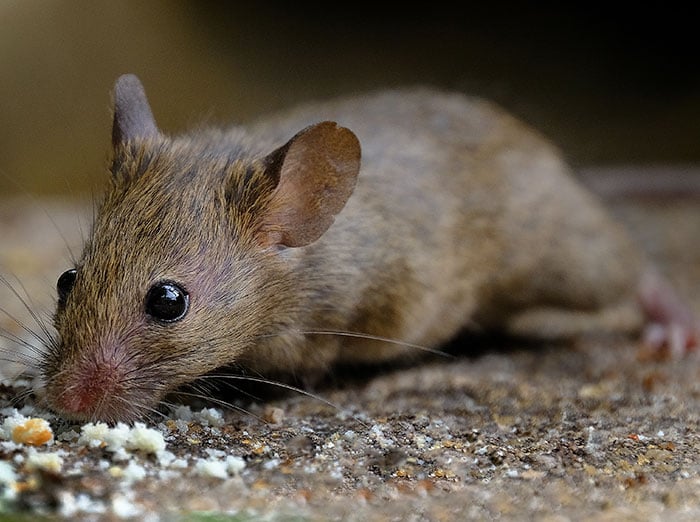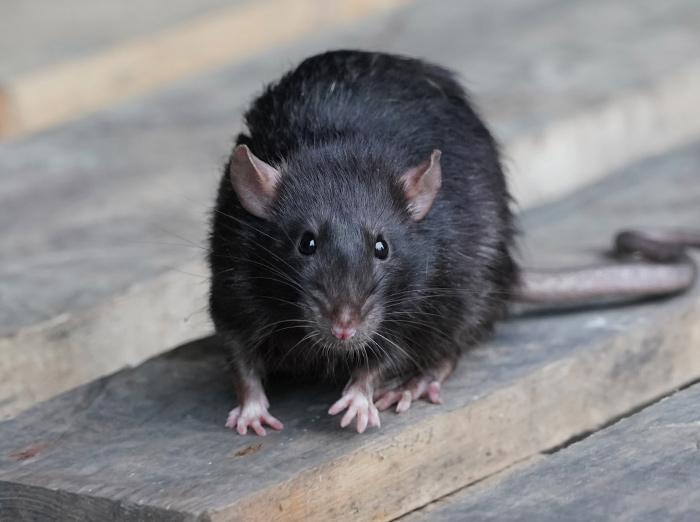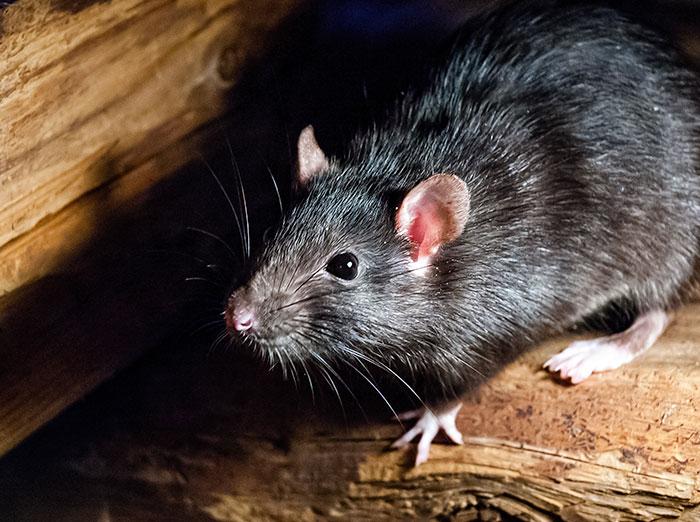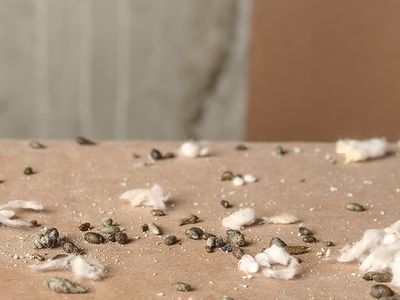South Carolina’s temperate climate makes it an ideal habitat for many types of wildlife—including rodents. While some rodents live peacefully outdoors, others are commonly found invading homes, searching for food, water, and places to nest. Let’s take a look at the three most common rodents in the Pee Dee and Grand Strand regions; we’ll also explain what you can do to keep them out of your South Carolina home.

House mouse
House mice are uninvited guests that seem to settle in just as comfortably as the homeowners. Small, sneaky, and surprisingly adaptable, these rodents can turn your house into their ideal home. With plenty of hiding spots, warmth, and food sources, it’s no wonder they’re tough to get rid of once they make their way inside. Understanding why they’re drawn to your space is the first step in keeping them out.
Appearance: What does a house mouse look like?
- Size: 2.5 to 3.5 inches in length, not including the length of the tail. The tail is about the same length as the body and head.
- Body: The nose of a house mouse is conical, its ears are big, and its tail is thin and visibly hairless.
- Color: Most house mice appear gray or black with a lighter-colored underbelly. Some appear light brown with black hairs mixed in.
Behavior: What abilities does a house mouse have?
- Jumping: Mice can jump 13 inches straight up.
- Climbing: Mice can scale vertical surfaces if they can grip the material with claws.
- Squeezing: It can squeeze through any hole that is the diameter of a dime or larger.
- Gnawing: If a mouse can’t squeeze through a hole, it will scrape and gnaw at it with its strong teeth to make it bigger.
Prevention: How to keep mice out of your home.
- Seal entry points: Mice often chew through weatherstripping if there are tiny gaps. Replace all weatherproofing to avoid this.
- Protect food: Mice want to live near food. Storing food in sealed containers helps to deter this.
- Remove hiding places: Mice like to hide in clutter. They’ll get into piles of clothing, stacks of cardboard, etc. When exploring your exterior, they’ll hide in dense vegetation. Trim plants to reduce hiding places.

Norway rat
Also known as “brown rats” or “sewer rats,” Norway rats prefer to live close to or underneath the ground. When they enter your home, they’re likely to infest areas near the bottom of your home, such as a basement or a first-floor room. Before they do this, you’ll likely find them nesting in your crawl space—if you have one.
Appearance: What does a Norway rat look like?
- Size: 7 to 9.5 inches long, not including the tail.
- Body: Blunt nose, small ears, and a thick tail about the body's length.
- Color: Brown or gray with a lighter underside.
Behavior: What abilities does a Norway rat have?
- Jumping: They can jump two feet straight up.
- Burrowing: These rats are strong burrowers, often creating burrows underneath junk piles. They don’t usually climb but can do so if necessary.
- Squeezing: They can squeeze through gaps as wide as a quarter's diameter.
- Gnawing: Like mice, Norway rats have strong, ever-growing incisors, which they need to gnaw on hard materials to keep them trimmed. Wood, plastic, and wiring are just a few materials these rodents will chew on.
Prevention: How to keep Norway rats out of your home.
- Seal entry points: Seal cracks, gaps, and openings around the base of your home and up to prevent rodents from slipping in.
- Eliminate food sources: Keep trash receptacles covered. These animals can jump and climb to get into trash cans and find a meal. Remove fallen fruit from the ground. Pick up your pet’s waste regularly, as some rats turn to this material when hungry.
- Remove hiding places: Remove leaves, brush piles, and other clutter around your exterior.

Roof rat
These rats are also known as “black rats.” Roof rats are slightly smaller than Norway rats and are known for their climbing ability. Unlike their ground-dwelling relatives, roof rats prefer higher nesting sites. In nature, they nest in tree cavities. Inside your home, they’re likely to nest in your attic, which makes them more challenging to detect.
Appearance: What does a roof rat look like?
- Size: 6 to 8 inches long, not including the tail.
- Body: Blunt nose, small ears, and a thick tail about the same length as their body.
- Color: Dark brown or black with a lighter belly.
Behavior: What abilities does a roof rat have?
- Jumping: Roof rats are agile rodents that can jump about two to three vertically and several feet horizontally, making it easier for them to move from one elevated surface to another.
- Climbing: Roof rats can easily scale walls, trees, and power lines, which is how they often access homes through roofs, attics, and upper floors.
- Squeezing: Like other rats and mice, these rodents can fit through tiny openings, sometimes as small as ½-inch.
- Gnawing: Like the other rodents mentioned, roof rats also chew on various materials to access food, build nests, and keep their teeth at a manageable length.
Prevention: How to keep roof rats out of your home.
- Seal entry points: Since roof rats climb to get into your home, you’ll need to consider high entry points and possible access routes. These pests commonly enter through damaged rooflines or unprotected gable vents.
- Cut off their food supply: Use tightly sealed garbage cans and remove trash regularly. Store food properly, avoid leaving pet food out, and harvest ripe fruits and vegetables.
- Modify your landscape: Trim back tree branches that overhang or touch your home to reduce roof rats’ access points.
When are rodents most active in South Carolina?
In South Carolina, mice and rats are active year-round, but their behavior and activity levels vary by season. Here’s a breakdown of rodent activity by season.
- Spring
As temperatures warm up, mice and rats become more active outdoors, searching for food and nesting materials. They often venture closer to homes and gardens and may even slip inside looking for a free meal or items to line their nests. Populations increase in the springtime as rodents continue to reproduce. - Summer
During the hot summer, rodents often seek shelter in cool, shaded areas. They may move indoors to escape the heat, making crawl spaces and basements appealing. Remember, rodents are nocturnal critters and move about at night, avoiding the hottest parts of the day. - Fall
As temperatures drop in the fall, mice and rats begin looking for a warm place to live with reliable food sources. This is a prime time for rodent problems as both species enter homes to prepare for winter. Attics, storage closets, garages, and other parts of homes will likely experience increased rodent activity in the fall as they scavenge for food and build nests indoors. - Winter
Although South Carolina winters aren’t as rough as in other parts of the country, rodent activity is most concentrated indoors. These pests would prefer to avoid the cold and stay in a warm area where there’s plenty of food.
What to do if you suspect a rodent infestation
It is always best to get a professional opinion. Rodents spread germs and diseases, damage stored items, leave feces and urine behind as they explore, bring ticks in with them, and damage building materials and personal belongings. If you live in Florence, Kingstree, Myrtle Beach, or elsewhere in Harris’ South Carolina service area, call us for expert rodent control! We provide targeted rodent treatments to remove these pests from structures.
Sign up for a home pest control plan for ongoing protection
In addition to our stand-alone rodent control services, our locally owned and family-operated pest control company also provides year-round home pest control services that address rodent and insect activity. Let our pest control specialists eliminate and prevent pests from infesting all year!



Interested In Adding Moisture Control?
At Harris Pest Control, our 50+ years of industry experience have taught us that no two homes are the same.
If you're searching for a residential plan that includes a yearly moisture service, we've got you!
Or Call For Details (843) 665-4325





